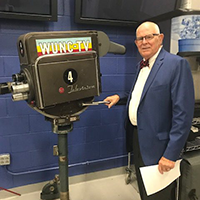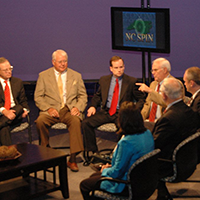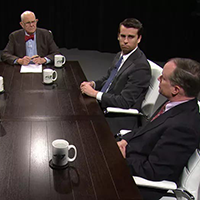How schools use poverty as an excuse
Published May 24, 2014
by Bill Fletcher, Wake County School Board member, published in News and Observer, May 24, 2014.
North Carolina’s new curriculum standards for what children need to know and be able to do have highlighted the persistent performance gap between income groups. Many poor kids aren’t making it in our schools. Pundits point to persistent poverty as the root cause. I beg to differ.
Poverty does not define a child’s talent, creativity, curiosity or passion for life. Poverty has become an excuse – not for those who are poor, but rather for the institutions that aim to serve them. Poverty is the label institutions use to excuse their own lack of performance.
The “poverty gap” is actually the gap between good intentions and effective solutions. Why are the expectations for poor children so low? Why is remediation available only after a failing grade? Do we really believe that all children can learn?
The truth is that all children do learn! And our public schools must see that every child learns the skills and cultivates the abilities to reach full potential.
Back in 1998, the Wake school board set an ambitious goal: that 95 percent of students in grades three through eight would read and do math at or above grade level. In 2003, more than 89 percent of poor children with no other exceptionality reached that high standard. Almost 93 percent of “not poor” children scored the same. The poverty gap had been closed! So why, just 11 years later, has the poverty gap returned?
The good work of teachers and administrators to reach Goal 2003 stretched the district’s operational systems to new heights but did not institutionalize the changes. Over time, the systems reverted to the old, familiar way of doing things.
Education consultant Judy Elliot says, “The systems in place are perfectly designed to produce the results we are getting.” These business systems allocate resources, organize service delivery within the district and teaching in our schools. To improve performance, the systems must improve. Eighty percent of gains will come from carefully redesigned business and instructional systems.
The first objective is to make “time with teacher” the fundamental organizing unit. No child should be “lost” in a classroom because the teacher doesn’t have enough time to nurture curiosity and learning. Some students need more time with teacher in a more intimate setting. So let’s organize schools around the time needed to meet the instructional needs of students. This includes time within the instructional day, and the length of and number of instructional days. No more “one size fits all.”
Second, let’s organize so that each teacher has the time and resources to meet at least 80 percent of the educational needs of each student – before reaching outside the classroom for instructional specialists. Given the diverse needs of students, this 80 percent standard may require a smaller student-teacher ratio for one group and may enable a larger ratio in another.
And the new systems must provide appropriate compensation and working conditions for teachers – to include quality professional development and time for collaboration and reflection.
Every student deserves to learn from a dedicated and highly qualified teacher. Within these redesigned systems, students will have the time they need to learn, and teachers will have the time necessary to teach and to motivate. And every student, regardless of economic condition, will have the resources to reach his or her potential.
Are we as a community willing to properly resource our schools so that students who need extra support get it? And so that our brightest students remain challenged and engaged? Or will we stand by and watch another generation be processed through a system unable to meet their needs?







